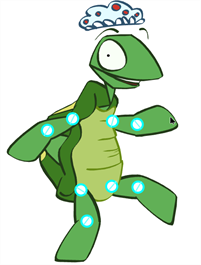- Modules
- Animation Techniques
- Stop-motion Animation
Stop-motion Animation
T-PRIN-002-004
Stop-motion animation is made by moving, then photographing real world objects frame-by-frame to create the illusion of movement on the screen. We can divide stop-motion animation into four categories.
Puppet Animation
Puppet animation is a type of stop-motion animation involving puppet figures that are animated frame-by-frame. Usually, the animators create a physical three-dimensional scene, similar to a small theatre, where the action will take place. The puppets generally have an armature (flexible skeleton) inside of them so they can be positioned and animated smoothly. This also prevents the puppet from moving and allows it to stay steady when the animator has to photograph a frame of the scene.

Claymation
Clay animation is sometimes similar to puppet animation. The figures and characters are made of clay, but they can also have an armature or a wire frame inside of them to help maintain their pose while shooting a scene. However, when animating with clay, it is also possible that the figure be made entirely of clay, without an inner armature. This allows the animator the freedom to animate the figure smoothly, manipulating it from one shape to the next, without the slightly jerky movement typically associated with puppet animation.

Cut-out and Silhouette Animation
Cut-out animation refers to animation made from two-dimensional pieces of material. More often than not, it is paper that is cut into different shapes, but fabric can also be used for the same purpose. The characters will usually be divided into different parts (head, neck, arm, leg, torso, etc) and moved piece by piece to create the animation.

Silhouette animation uses the very same technique, except that characters and items in the scene are completely black and only the background contains colour, so that it looks like a scene in silhouette. The silhouette technique was invented by German animator Lotte Reiniger.
Object Animation
Object animation is a type of animation that uese regular inanimate objects as props, characters, and layout elements.

Sand Animation
Unique and intriguing, sand animation is typically done with the use of a light box. In a darkened room, the light box is turned on and sand is poured over it to completely block the light. Then, using a brush or a stick, the animator traces a drawing in the sand, allowing the light to shine through, creating one frame of animation. A picture is taken, and the animator moves the sand around a little bit to create the next frame, followed by another picture, and so on, creating movement.
Time Estimated 10 mins
Difficulty Level Beginner